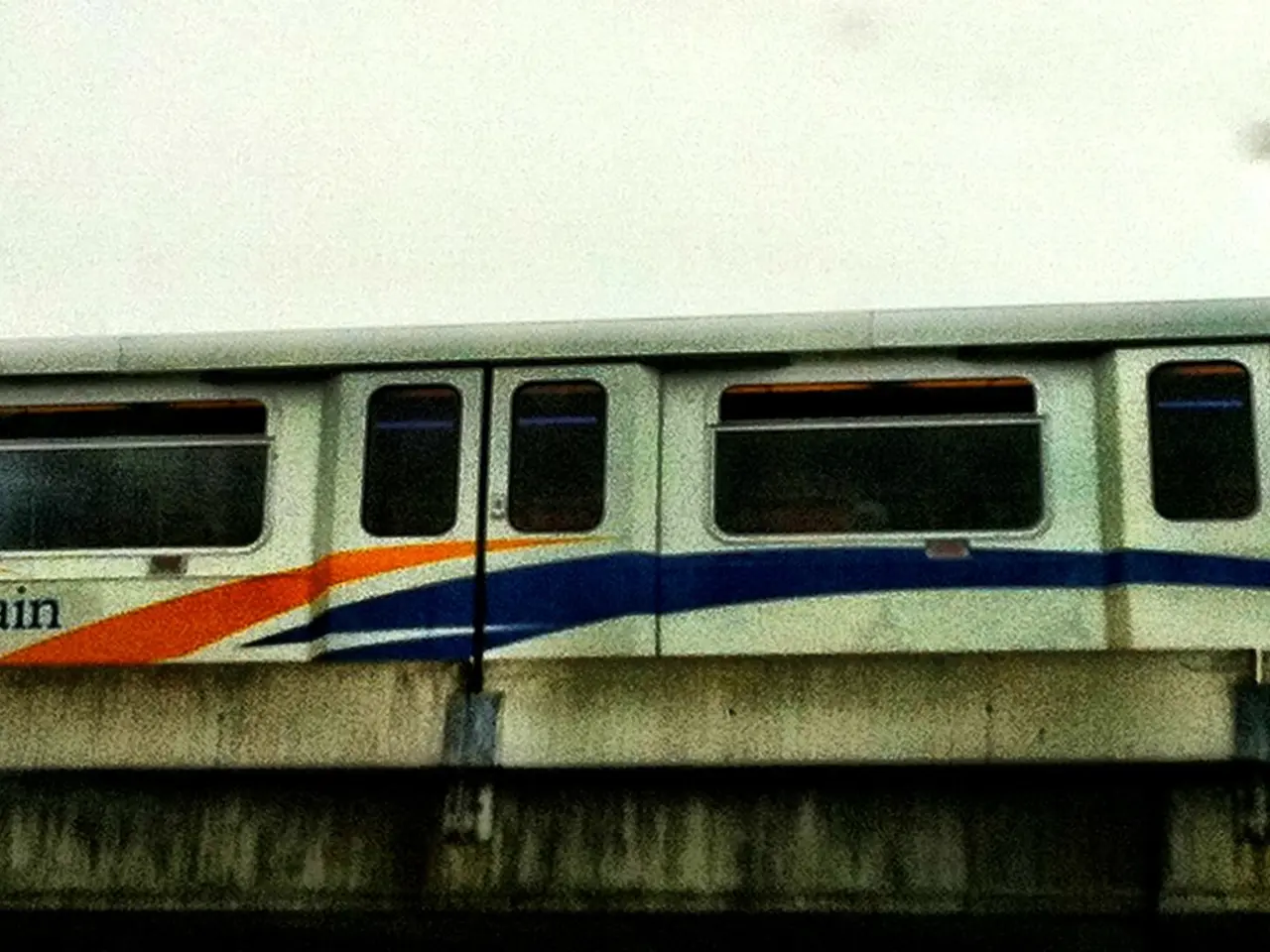Prohibition on the Employment of the Bath Tramway
Lübeck, a Hanseatic city in northern Germany, is set to maintain its Baltic Sea Railway, a move that will bolster regional connectivity and contribute to sustainable traffic transition. The decision comes as part of a broader SPNV strategy for Lübeck and its region, which aims to connect the past and future with modern public transport solutions.
The Baltic Sea Railway, one of the fastest-growing rail connections in Schleswig-Holstein, sees over 4,150 passengers daily. Key stations outside major metropolitan areas, such as Timmendorfer Strand, Scharbeutz, and Neustadt i. H., are among the most frequently used.
The existing railway line will be maintained and connected to new construction and expansion routes on both sides via switches, ensuring continuous train traffic from Lübeck via Timmendorfer Strand to Neustadt in Holstein. This development is a significant milestone, according to Lübeck's Mayor, Jan Lindenau, who welcomed the new plan as an important step towards climate-friendly mobility of the future.
The SPNV strategy for Lübeck and its region is centered around the development of modern public transport solutions. Building Senator Joanna Hagen emphasized the opportunity to permanently upgrade the route with this new infrastructure, highlighting its importance for the development of Lübeck and the entire region.
The current status of the Baltic Sea Railway in Lübeck is closely connected to a major rail infrastructure project involving the Fehmarnbelt link and the development of European rail corridors. A new 88-kilometer rail link between Puttgarden (on Fehmarn island) and Lübeck in Schleswig-Holstein is under construction and expected to enter service by the end of 2029. This project is part of a larger initiative to connect Denmark through Germany to Italy by rail, shifting freight traffic from road to rail in line with EU climate goals.
EU-funded projects are also enhancing Baltic Sea port infrastructure in Lübeck-Travemünde through the Hansalink 3 project. This initiative invests €45 million (with €22 million from the EU) into port and rail infrastructure improvements, supporting better freight flow and digitalization, to be completed by end of 2027.
Regarding integration into the regional S-Bahn concept, while explicit mentions of integration for Lübeck's Baltic Sea Railway are not found, the rail corridor enhancements align with goals to improve regional connectivity, which likely include S-Bahn service upgrades in the broader Schleswig-Holstein region.
Lübeck is aiming to create a future-oriented regional SPNV strategy through constructive dialogue with the state. The city is seeking cooperation with the state to achieve this goal, relying on the preservation of the Baltic Sea Railway as a central element for sustainable traffic transition, according to Lübeck's traffic transition officer, Michael Stötter.
In summary, the Baltic Sea Railway's key section between Fehmarn and Lübeck is under construction, targeting completion by 2029 as part of a major Europe-wide freight and passenger corridor. EU-funded projects are improving related port infrastructure in Lübeck-Travemünde to optimize freight and passenger traffic, completing by 2027. While explicit mentions of integration into the regional S-Bahn concept for Lübeck's Baltic Sea Railway are not found, the rail corridor enhancements align with goals to improve regional connectivity, which likely include S-Bahn service upgrades in the broader Schleswig-Holstein region. The compromise allows for the development of modern public transport solutions that connect the past and the future.
- The Baltic Sea Railway, a key component of Lübeck's SPNV strategy, is an essential element in the city's pursuit of sustainable traffic transition, as emphasized by Lübeck's traffic transition officer, Michael Stötter.
- The SPNV strategy in Lübeck also encompasses the development of the city's environmental-science sector, given the focus on climate-friendly mobility and the integration of modern public transport solutions.
- The financial aspect of this transition is significant, as EU-funded projects are investing heavily in the improvement of port infrastructure in Lübeck-Travemünde and the construction of the new railway link, contributing to the region's economic growth.
- As the Baltic Sea Railway connects with other major transit routes, such as the upcoming Fehmarnbelt link and the European rail corridors, it becomes a crucial part of the broader transportation industry, serving both freight and passenger traffic in a more environmentally sustainable manner.




